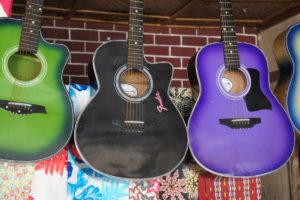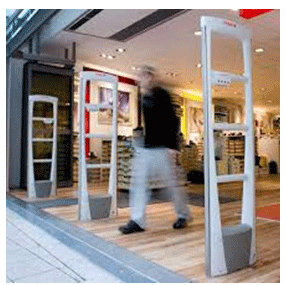 I recently read over an article opining the phrase “sales cures shrink”. While the author touched on both sides of the coin, I found it interesting that in today’s retail climate, anyone would think that you can simply sell your way out of losses. Let’s cut to the chase here; we’re not bringing in 20% increases over last year, hell we’re lucky to come in flat to last year. Online giants like Amazon are eating up market share like never before and if brick and mortar don’t do something fast, sales will continue to slump.
I recently read over an article opining the phrase “sales cures shrink”. While the author touched on both sides of the coin, I found it interesting that in today’s retail climate, anyone would think that you can simply sell your way out of losses. Let’s cut to the chase here; we’re not bringing in 20% increases over last year, hell we’re lucky to come in flat to last year. Online giants like Amazon are eating up market share like never before and if brick and mortar don’t do something fast, sales will continue to slump.
Let’s break this down a bit further. Let’s say your shrink last year was 2% to your sales of $1,000,000. That’s a loss of $20,000 for the year, or about $57 a day. Taking that shrink number and dividing that into your loss per day gets you right at $2680. That means you have to sell an additional $2,680 on top of that $57 loss just to get to the break-even point. Understand this, you CANNOT stay in business if all you’re doing is breaking even. You just can’t. You need to turn a profit!
Being a realist here, there is no way that you’re ever going to sell your way out of shrink. EVER. It is a flawed philosophy and if you ever hear someone utter this crummy phrase, understand that whomever that person is, they have no idea what they are talking about. Unless you have some miracle business model and you’re bringing in money hand over fist, then “selling your way out of shrink” just isn’t an option. It’s a start…
Offsetting shrink takes a multi-faceted approach. Just as you can’t sell your way out of shrink, you can’t very well keep everything under lock and key, and it’s impractical to have the security devices on every single sku. If you’re trying to increase sales, you may be inclined to have more displays of merchandise. Copious amounts of data show that a customer is more likely to make a high dollar purchase if they have a chance to touch and feel the item. (Think sunglasses, hunting scopes, sports equipment, etc.) To sell it, they have to be able to touch it. For you not to lose it, you need to secure it in some manner. Once you find the balance of sales vs. LP procedure, you’ll find the winning formula for shrink reduction.
Proper security measures will only go so far to stop external losses. Internal theft accounts for an even bigger percentage of losses inside your store. Knowing who to hire, and whom you are hiring are both vital spokes in the retail wheel of shrink reduction. You need to go a step further and encourage a culture of honesty, integrity and ethics in your store. Employees should feel invested in your business, as that emotional attachment will likely deter an employee from stealing.
As with any problem, there are always a multitude of solutions to bring about positive change. Get away from a soloed approach to shrink and look at all the ways your losses may be tackled. Just as you would be foolish to believe that locking up all of your merchandise would stop theft, you’re of equal foolishness if you believe that sales are the cure all for shrink; and I personally, pity the fool.
 Shoplifting affects everyone. As shoplifting and employee theft seem to be an unstoppable problem for the retail industry, researchers try to find different methods to prevent and combat shoplifting.
Shoplifting affects everyone. As shoplifting and employee theft seem to be an unstoppable problem for the retail industry, researchers try to find different methods to prevent and combat shoplifting.

 How did your retail business do in 2016? Face it, regardless of how well you did or did not do, you could have done much better. The key is to keep your cash, assets and merchandise on YOUR bottom line not someone else’s. Thieves take the money you could have had away, easily in some cases.
How did your retail business do in 2016? Face it, regardless of how well you did or did not do, you could have done much better. The key is to keep your cash, assets and merchandise on YOUR bottom line not someone else’s. Thieves take the money you could have had away, easily in some cases. If you were asked what area of your store would present the most opportunity for employee theft and fraud, what would you answer? The checkout lanes where cashiers have access to the register, the ability to pass merchandise,
If you were asked what area of your store would present the most opportunity for employee theft and fraud, what would you answer? The checkout lanes where cashiers have access to the register, the ability to pass merchandise,
 drawer. IF someone reaches towards the drawer the register should be shut. Registers should be closed immediately following a transaction. If a cashier is sorting through the money or “straightening” they could be slipping money out and pocketing it or dropping money, then putting it in their pocket. Don’t “exchange” bills for patrons, there are some shoplifters who also engage in short changing and confusing cashiers and steal money using this method. Others will argue they did not get the right amount of change and start reaching in the till. If there is a dispute over change a manager needs to conduct a till audit with a partner, in the cash office. If there are enough registers in the store, limit one cashier to one register, when the cashier is done for the day, their money goes in their bag with a supervisor present and the supervisor drops it in the cash cart and rolls it to the cash office. Keep large bills under the till, if they are on top they are easy to see and easier for a grab and run. Consider purchasing locking till covers for registers that have money in them but are not currently in use. There are traveling shoplifting rings and till tap rings that have register keys and will open drawers if no one is paying attention. Till covers prevent someone from getting to the cash even if they open the drawer. Finally, when a register has too many large bills or excessive amounts of money, do a skim and take the excess to the cash office.
drawer. IF someone reaches towards the drawer the register should be shut. Registers should be closed immediately following a transaction. If a cashier is sorting through the money or “straightening” they could be slipping money out and pocketing it or dropping money, then putting it in their pocket. Don’t “exchange” bills for patrons, there are some shoplifters who also engage in short changing and confusing cashiers and steal money using this method. Others will argue they did not get the right amount of change and start reaching in the till. If there is a dispute over change a manager needs to conduct a till audit with a partner, in the cash office. If there are enough registers in the store, limit one cashier to one register, when the cashier is done for the day, their money goes in their bag with a supervisor present and the supervisor drops it in the cash cart and rolls it to the cash office. Keep large bills under the till, if they are on top they are easy to see and easier for a grab and run. Consider purchasing locking till covers for registers that have money in them but are not currently in use. There are traveling shoplifting rings and till tap rings that have register keys and will open drawers if no one is paying attention. Till covers prevent someone from getting to the cash even if they open the drawer. Finally, when a register has too many large bills or excessive amounts of money, do a skim and take the excess to the cash office.
